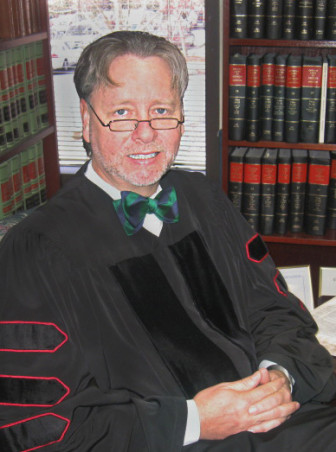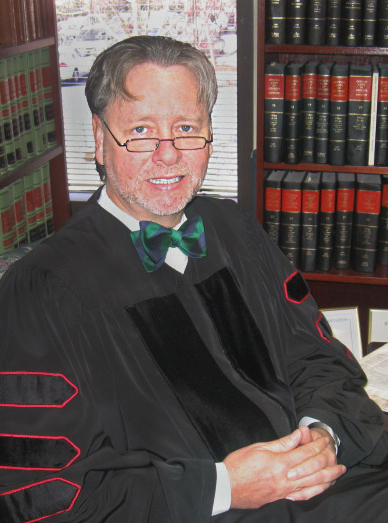 A recent JJIE article titled "In Georgia, Sex Abuse Allegations Cloud Progress of Juvenile Justice Reform" is a story of contradictions -- in the midst of juvenile justice reform comes the federal report showing that Georgia has among the nation’s highest rates of sexual assaults in its secure juvenile facilities. The Atlanta Journal Constitution quoted my response -- "distressing."
A recent JJIE article titled "In Georgia, Sex Abuse Allegations Cloud Progress of Juvenile Justice Reform" is a story of contradictions -- in the midst of juvenile justice reform comes the federal report showing that Georgia has among the nation’s highest rates of sexual assaults in its secure juvenile facilities. The Atlanta Journal Constitution quoted my response -- "distressing."
Although "distressing," these allegations do not "cloud" the progress of juvenile justice reform -- they underscore the reasons for reform.
These stories aptly report "what" and provide some insight into "why" this distressing problem is occurring, but there is much more to the "why.” There is an elephant in the room -- the misuse and overuse of secure detention facilities.
George Bernard Shaw wrote that "All great truths begin as blasphemies," and so, this is my blasphemy: We are making communities less safe by sending too many of the wrong kids to youth prison that turns them from the aggravating sort into the scary sort.
So long as this occurs, we will continue to have kids sexually assaulted regardless of the internal changes implemented by the commissioner of Georgia’s Department of Juvenile Justice or any other commissioner of any other state’s DJJ. The changes may drastically reduce the number of incidents, but they can't eliminate the problem so long as the problem is grounded in the quantity and condition of the kids sent to these facilities.
The devil is in the details and in reading the details of the report it states, "In each survey, sexual victimization rates were two to three times higher in large facilities ...," and that "youth exposed to longer stays in secure facilities reported more incidents of sexual assaults."
Let’s throw some more facts into this mix specific to Georgia to expound on my point. Georgia is one of the few states where a judge can commit a kid adjudicated on one of at least 30 felonies directly to a secure facility for as long as five years and a minimum of one year.
A study conducted by the Pew Charitable Trust -- at the request of Georgia Gov. Nathan Deal, and in support of the special reform council's task to study the juvenile justice system and make recommendations -- found that nearly 40 percent of all youth in secure facilities were low risk compared to only 24 percent that were high risk.
Now let’s add these numbers up. The four Georgia facilities cited in the report were "large" and three of them were filled mostly, if not entirely, with designated felons required to serve at least one year -- thus exposing them to greater risk of sexual assaults by virtue of longer stays, according to the report. Three of the four facilities are long-term housing designated felons and the fourth is a short-term facility.
It just so happens that because the long-term facilities are filled to capacity with these designated felons, the state DJJ is forced to house some in short-term facilities to avoid over-crowding. The fourth facility cited in the report is a short-term facility that primarily houses pre-adjudicated kids. This means that kids having been adjudicated as a designated felon and required to serve at least one year, if not more, are housed with kids who may not have been adjudicated or sentenced.
So, not only do we have a system that mandates a long-term stay in large facilities, but includes a majority of low- and medium-risk kids housed with high-risk offenders in which some of these adjudicated felons are mixed in with kids not even adjudicated.
It's a system that sends lambs to be slaughtered by wolves. Sadly, the wolves are high-risk kids and, in some cases, adults hiding in sheep's clothing. These are the correctional officers.
Here is the good news.
The Georgia’s DJJ commissioner and his staff have played an active and instrumental role in formulating the recommendations of the special reform council to remedy the "lambs to the slaughter" paradox. These recommendations, of which most are now codified, are data- and best-practice driven, designed to eliminate the mixing of high- and low-risk kids.
The blending of high- and low-risk kids is a recipe for trouble. Just as any chemist knows you don't add water to acid or the result is a fiery lab, a juvenile justice practitioner shouldn’t introduce low-risk kids to the really scary kids or the results are fiery facilities with the fire spreading to communities when these kids, who are made worse by the system, return home.
Stopping sexual assaults in juvenile facilities is not only an institutional dilemma, it is a multi-systemic challenge that requires more than the actions of a commissioner -- it requires a complete overhaul of a larger system in which Georgia’s DJJ is but one of many.
Those of us on the special council are "distressed" about the report, but we're not shocked. We had learned nearly a year before the federal report was published that the recipe we were mixing in our juvenile justice system contributed to troubling events in our secure facilities -- that's why we made recommendations to stop the mixing!
The federal report doesn’t cloud reform -- it highlights the reasons for reform. Reform is the wind of change that blows away the clouds of distress.
